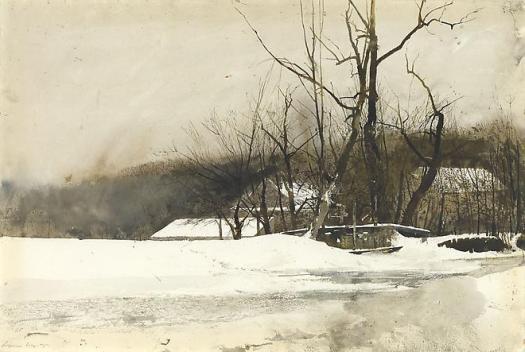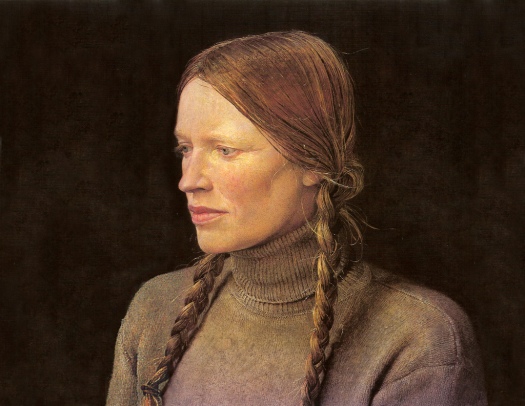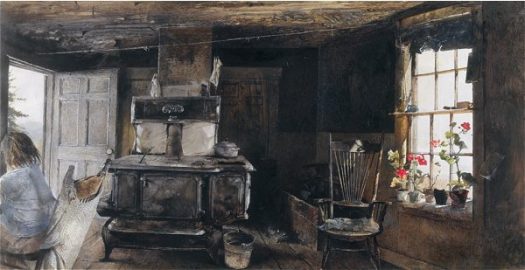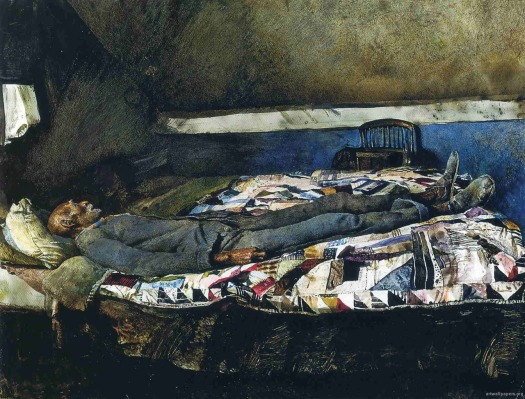My aim is not to exhibit craft, but rather to submerge it, and make it rightfully the handmaiden of beauty, power and emotional content.
-Andrew Wyeth
While reading through Wyeth’s books I noticed he saved a particular painting technique for subjects he felt deeply towards. This technique was dry brush.
While his watercolors captured the wild spontaneous qualities of nature:
 and his egg tempera are solid in their careful articulation of form and detail:
and his egg tempera are solid in their careful articulation of form and detail:
 his dry push strikes a balance somewhere between the two:
his dry push strikes a balance somewhere between the two:
I work in drybrush when my emotion gets deep enough into a subject. So I paint with a smaller brush, dip it into color, splay the brush and bristles, squeeze out a good deal of the moisture and color with my fingers so there is only a very small amount of paint left. Then when I stroke the paper with the dried brush, it will make various distinct strokes at once, and I start to develop the forms of whatever object it is until they start to have real body…. Drybrush is layer upon layer. It is what you call a definite weaving process. You weave the layers of dry brush over and within the broad washes of watercolor.
For those of you who saw my blog on working without photography or the recent post on Milton Resnick you will notice a reiteration of the theme of dynamic dualities. Wyeth’s most successful dry brush paintings contain contradicting variables which speak honestly to the flow of experience.
My struggle is to preserve that abstract flash – like something you caught out of the corner of your eye, but in the picture you can look at it directly.
 It is at once loose and tight, spontaneous and articulated, murky and clear. All forms are abstracted to reflect the subjective nature of his observation. This balance is well articulate by the following:
It is at once loose and tight, spontaneous and articulated, murky and clear. All forms are abstracted to reflect the subjective nature of his observation. This balance is well articulate by the following:
There’s a quote from Hamlet that is my guide… He tells the players not to exaggerate but to hold a mirror up to nature. Don’t overdo it, don’t underdo it. Do it just on the line.
